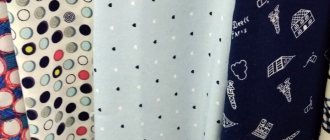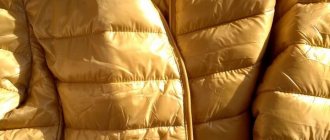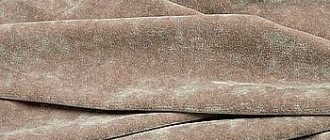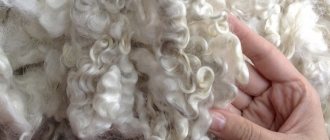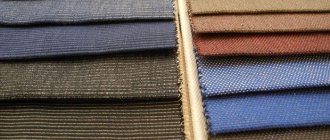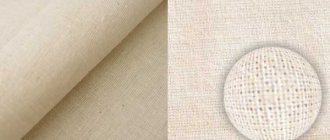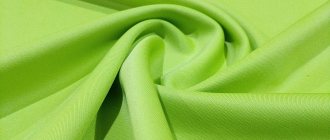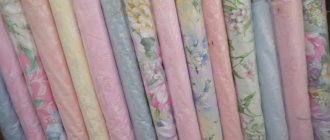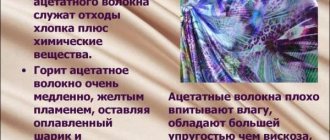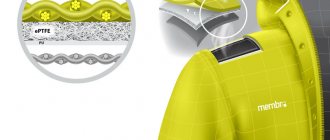Brief history of origin
Historians suggest that the first production of fabric dates back to the Middle Ages. There is no consensus on the origin of the material. Some believe that the first mention of it belongs to Italy, others - to France.
Even experienced textile workers who have an idea of what paper is, find it difficult to answer where the name of the material came from. Translated from French, “bombasin” means “silk”, and from Italian and Spanish the word “bombazine” is translated as “cotton” or “paper”.
Medieval sources mention a description of bombasin silk fabric. Later, before the advent of long and medium fiber cotton, bombazine was produced by weaving linen warp and silk weft.
In Russia, the fabric was called bombazin. Initially used in sewing mourning clothes.
Origin story
The original name of the material is bombazine. It comes from the French word for silk, cotton. The material appeared in England at the end of the 16th century. At the beginning of the 19th century, the center of its production was the English city of Norwich.
Mourning and elegant clothes were sewn from black bombazine. The material was originally made from silk with wool, silk, then from linen and cotton. With the development of industry, bombazine began to be made from cotton. The fabric became cheaper and became available to the people.
In Russia, the material was called bumazeya, bomazeya, bumazey. Since the mid-19th century, sweaters, dresses, shirts, and underwear were made from soft, warm fabric. Paper robes, shirts, and children's clothing were popular in Soviet times.
Composition and description
Fumazeya is a natural fabric made from linen and cotton threads (or only cotton), often twill, less often simple weaving. At the production stage, small fibers are brought to the wrong side, forming a pile.
The material is soft and pleasant to the touch. Fumazea is thicker than regular flannel and thinner than flannel, differs from these materials in density
.
Depending on the fibers used, two types of paper are distinguished. Medium and long threads produce high-quality fabric with improved characteristics. Its cost is not much higher than standard low-grade cotton wool, woven from short cotton fibers. But at the same time, the material is inferior in wear resistance.
Rules of care
Although cotton tolerates the high temperature of an iron well, all washing modes, paper at too high a temperature and strong mechanical stress quickly wears out and loses lint. This fabric should be washed in warm water, without using bleach, and dried flat, out of the sun. You can only iron completely dry items in the “Cotton” mode on the front side.
Characteristics and properties
Material made from natural raw materials, produced in the Russian Federation, complies with the standards of GOST 29298 - 2005. The main properties and characteristics of paper are shown in the table below:
| Index | Meaning |
| Weave weave | Twill, less often - simple |
| Canvas drawing | Plain bleached, plain dyed, printed |
| Structure | The front (right) side is smooth, the back side is short-combed |
| Cotton fibers used | Short; medium for the production of high quality fabrics with higher density (carded yarn) |
| Density, g/sq.m. | 160 – 265 |
| Hygroscopicity | 6 – 12%. The fabric absorbs moisture well and wicks it away quickly |
| Breathability | Average |
| Vapor permeability | Excellent |
| Electrification | Minimum |
Before working with the material, it is worth considering the property of paper: it is characterized by shrinkage. Therefore, it is recommended to decate the fabric before cutting.
Types and their properties
Like flannel, flannel comes in various types, each of which has its own characteristics and properties.
- Cord paper , also called harsh, is a fabric that has not been processed and is intended for technical needs. It is used to make the covering of piano hammers, internal parts of shoes, etc.
- White paper , also called bleached, is a fabric that has been processed, but not additionally dyed. Due to its hypoallergenic properties, it is widely used for the manufacture of children's clothing, diapers, and bed linen.
- Plain dyed - fabric with a pattern applied to it. Bumazeya is often painted in bright colors, as it retains them well without fading with washing.
- With reserve pile - a plain fabric with alternating smooth and fleecy areas that form patterns.
Advantages and disadvantages
The advantages that cotton wool has have made this material popular, despite the fact that knitted fabrics are increasingly replacing woven ones. The advantages include:
- Natural composition ensuring hypoallergenic and environmentally friendly material.
- Softness.
- Ability to retain heat.
- Excellent drape.
- Hygroscopicity.
- Affordable price.
Bumazea has few disadvantages. If you properly approach the preparation of the material and care for products made from it, they will not become a problem. The disadvantages include the following qualities:
- creasing;
- rapid abrasion of the pile surface;
- color instability;
- peelability;
- shrinkage after the first wash.
Pros and cons of bumazea
Bombazine is used to make beautiful and comfortable things. They have several advantages over other types of fabrics:
- tenderness and softness;
- hygiene;
- environmental friendliness;
- thermal insulation;
- ease of draping;
- hypoallergenic;
- hygroscopicity.
There are also disadvantages:
- Relatively rapid abrasion of the pile, which leads to loss of thermal insulation qualities.
- Fragility of color - the fabric quickly fades in the sun.
- Due to the thick pile, the material takes a long time to dry, which causes inconvenience.
Proper care will help extend the life of products and maintain their original beautiful appearance.
Types of bumazea
There are several types of fabric:
- harsh;
- bleached;
- smoothly painted;
- Printed;
- with reserve napping (with the formation of a fleecy pattern on the front side);
- cord
Plain colored paper is represented by samples of rich tones. Its distinctive property is that the fabric does not lose color saturation for a long time. This is facilitated by the method of applying the dye: the canvas is placed in a container with pigment for several hours. Thanks to this treatment, the surface of the textile has a uniform structure.
Printing is done by printing a design on one or both sides. This method allows you to get a durable print without changing the structure of the canvas.
Bleached is the most environmentally friendly and safe option. Therefore, material made without the use of dyes is most often used for sewing children's underwear and bedding sets. Army underwear is made from it.
Reserve napping is a special type of processing in which individual ends of the fibers are brought to the front side, forming a relief pattern with alternating smooth and fleecy areas.
Fumazeya cord additionally undergoes a mercerization stage and is used for the manufacture of insoles and linings in footwear.
Kinds
Bumazea comes in several varieties, each of which has its own characteristics.
Plain painted
This is a fabric of rich colors, having a uniform texture and attractive appearance. Painting of the canvas is carried out by completely immersing the material in a container with dye for several hours. After this, the material is removed and cleaned of excess paint.
Plain-dyed bombazin is good because it does not lose the richness of its color when washed, therefore it is ideal for bright dyes. It is usually used to make clothes, home textiles, and furniture upholstery.
Author:
Zakharova Nina Afanasyevna
I hope you like my article! If you find any shortcomings, just write to me about it! I am always ready for a conversation and will answer any questions you have, ask them!
